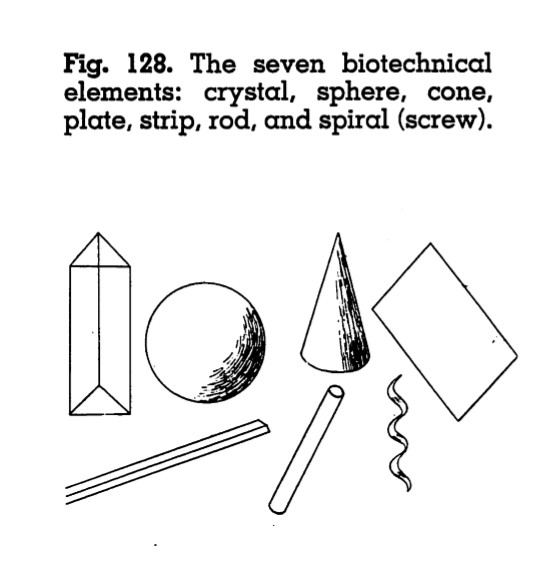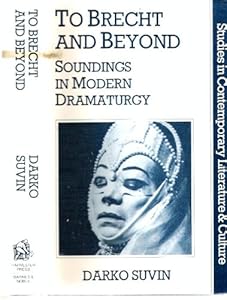Oliver I.A. Botar: Prolegomena to the Study of Biomorphic Modernism: Biocentrism, László Moholy-Nagy’s “New Vision” and Ernő Kállai’s Bioromantik (1998)
Filed under thesis | Tags: · aesthetics, art history, avant-garde, biocentrism, biology, constructivism, modernism, nature, photography, science

“Focusing on Weimar Germany, I ground the study of biomorphic Modernism in Ernő Kállai‘s 1932 identification of a trend he termed Bioromantik. Kállai wrote from a biocentric position, an amalgam of Nature Romanticism and biologism espoused by Nietzsche, Ernst Haeckel, Ludwig Klages, Oswald Spengler, Raoul Francé and Hans Prinzhorn in the early 20th century, here established as a politically-charged category of intellectual history. Kállai characterized Bioromantik as art, the imagery, forms or themes of which express Monist, Neo-Vitalist, lebensphilosophisch and Organicist, i.e. biocentric concepts such as the life-force, creative/destructive aspects of nature, and our unity with it. The work of artists he cited (Arp, Klee, Moore, Kandinsky, Ernst, etc. ) is biomorphic Modernist in style. Kállai’s conception derives from his realization of the similarity between biomorphic art and scientific photography, here termed the ‘naturamorphic analogy’, a topos traceable to Kandinsky’s pre-war writing.
Probably inspired by Walter Benjamin’s review of Karl Blossfeldt’s photographs, Kállai’s epiphany occurred in the Moholy-Nagy-curated ‘Raum-1’ of the 1929 Film und Foto show in Stuttgart; in effect a three-dimensional statement of his ‘New Vision’ that aestheticized scientific photography, and that — like Moholy’s entire pedagogical project — I show to be rooted in biocentrism. Thus, the profound effect biocentric thinkers had on the milieux Moholy emerged from is discussed: The fin-de-siècle Haeckelian tradition of normative aestheticized scientific imagery is shown to underlie New Vision; the biocentric wing of the Jugendbewegung is revealed as a source of Moholy’s biocentric pedagogy; inspired by Francé, ‘Biocentric Constructivism’ is identified as a discourse engaged in by Mies, Moholy, Lissitzky, Hausmann and Meyer; the Bauhaus, with attention to Gropius, Klee, Kandinsky, Schlemmer and Meyer, is recast as a locus of biocentric ideas.
Like others, Kállai proposed a ‘psychobiological’ explanation for the naturamorphic analogy: the artists’ identity with nature and their consequent intuitive imaging of its unseen aspects also revealed by science. I show how the aestheticization of scientific images effected by New Vision enabled Modernist artists and critics to be exposed to such imagery — an historical alternative to the essentialist explanation that constitutes a basis for research on biomorphic Modernist art.” (Abstract)
Department of the History of Art, University of Toronto, 1998
762 pages
Darko Suvin: To Brecht and Beyond: Soundings in Modern Dramaturgy (1984)
Filed under book | Tags: · aesthetics, drama, performance, theatre

In this collection of nine essays written between 1967 and 1977, Darko Suvin discerns the shape of a post-Individualist drama which may be to our age what the theatre of Shakespeare and Ibsen was to theirs. Suvin establishes the principles of composition of a crucial group of modern plays.
He examines some major attempts and failures to replace Ibsen’s “Individualist” theatre with the “Collectivist” drama. Two particularly important and original contributions to the subject are Suvin’s chapters on the Happenings in the United States and on the Paris Commune Theatre Law. The book focuses on the work of Brecht, both because of the importance of his plays and because of what Professor Suvin sees as Brecht’s central position today in any cultural critique that refuses to despair.
Publisher Harvester, Sussex, 1984
ISBN 0855279753, 9780855279752
283 pages
PDF (140 MB, no OCR)
See also Suvin’s The Use-Value of Dying (1996)
Luigi Russolo: The Art of Noises (1916–) [IT, EN, ES, DE, FR, RU]
Filed under book | Tags: · aesthetics, futurism, music, noise, sound

The slim volume of essays, presented here for the first time in English translation, is one of the significant documents of musical aesthetics of this century. If the book itself has remained the province of a mere handful of readers, its ideas, passed on through a variety of later musical and literary movements, became the inspiration for some of the most innovative artistic creations of modern times. Luigi Russolo anticipated-indeed, he may have precipitated-a whole range of musical and aesthetic notions that formed the basis of much of the avant-garde thought of the past several decades. His ideas were absorbed, modified, and eventually transmitted to later generations by a number of movements and individuals-among them the futurists, the Dadaists, and a number of composers and writers of the nineteen-twenties. The noise instruments he invented fascinated and infuriated his contemporaries, and he was among the earliest musicians to put the often-discussed microtone to regular practical use in Western music. Russolo’s views looked forward to the time when composers would exercise an absolute choice and control of the sounds that their music employed. He was the precursor of electronic music before electronics had come of age.
Italian edition
Publisher Edizione Futuriste di “Poesia”, Milan, 1916
92 pages
English edition
Translated, and With an Introduction by Barclay Brown
Publisher Pendragon Press, New York, 1987
Monographs in Musicology series, Vol. 6
ISBN 0918728576
87 pages
Russolo at UbuWeb (includes 2 CDs and an edition of the 1967 Robert Filliou’s translation of the manifesto)
Wikipedia (EN)
Publisher (EN)
L’Arte dei rumori (Italian, 1916)
The Art of Noises (English, trans. Barclay Brown, 1987, no OCR)
El arte de los ruidos. Manifiesto Futurista (Spanish, 1996, the manifesto only)
Die Geräuschkunst (German, trans. Justin Winkler and Albert Mayr, 1999)
L’Art des bruits. Manifeste futuriste (French, 4th Edition, 2003/2013, the manifesto only)
Искусство шумов (Russian, undated, the manifesto only)
See also:
The Noise Instruments of Luigi Russolo (Barclay Brown, 1981, 18 pp)
Luciano Chessa: Luigi Russolo, Futurist: Noise, Visual Arts, and the Occult (2012)

